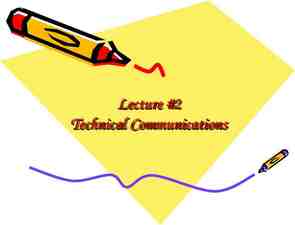Hand Hygiene
16 Slides2.51 MB
Hand Hygiene
Word Bank antibiotic resistance diarrhea germs hand hygiene pneumonia public health Safe Water System SARS-CoV-2 a condition characterized by episodes of frequent liquid stools (poop) a way of cleaning one’s hands that substantially reduces potential pathogens the science of protecting and improving the health of people and communities occurs when bacteria can no longer be killed by antibiotics that were once effective tiny microbes such as viruses and bacteria, which can cause disease an infection of the lungs caused by viruses, bacteria, or fungi a type of coronavirus that causes the respiratory disease COVID-19 a disinfectant/storage system that
Understandi ng Hand Hygiene Handwashing after contacting hazardous materials is an important habit to maintain your health Feces (poop) from people or animals contains germs that can cause diarrheal or respiratory infections Touching raw meats, contaminated objects, or people who are infected with a disease can make you sick
1. When do you generally wash your hands? Think About It 2. What barriers might people have that prevent them from washing their hands? 3. How has COVID-19 changed your hand hygiene behaviors?
About 1.8 million children under age 5 die annually from diarrheal diseases and pneumonia Handwashing could prevent in young children Hand Hygiene and CDC 1 out of 3 diarrheal diseases 1 out of 5 respiratory infections Estimated global handwashing after using the toilet is only 19% Handwashing education and access to soap in schools can improve attendance and child development If handwashing isn’t possible, alcohol-based hand sanitizers with at least 60% alcohol can be used to get rid of most germs
When to Wash Your Hands Hand Hygiene and CDC Before, during, and after preparing and eating food Before and after caring for someone who is sick with vomiting or diarrhea After using the toilet or cleaning up a child who has used the toilet or a diaper Before and after treating a cut or wound After blowing your nose, coughing, or sneezing After touching an animal, animal feed, animal waste, or treats After touching garbage Before and after touching your eyes, nose, mouth, or face mask due to COVID-19 After interacting with high-touch surfaces like doors, tables, and checkouts due to COVID-19
CDC Safe Water System (SWS) Hand Hygiene and CDC Provides a source of clean water as well as storage Used for drinking and sanitation Distributed to places without access to clean water Used heavily during outbreaks, natural disasters, and other emergencies to improve sanitation and reduce disease
1. What effects can proper hand hygiene have on the health of a community? Think About It 2. Why do you think handwashing is so important during food preparation? 3. How can education play a role in improving rates of childhood illness?
From the Expert https://youtu.be/eZw4Ga3jg3 E
1. CDC recommends you wash your hands for at least 20 seconds. How does this make a difference in its effectiveness? Think About It 2. Why is art an important part of public health? Can you think of any examples of art pieces or graphics you have seen that have public health messages? 3. How can antibiotic resistance that develops in one person ultimately end up affecting an entire community?
Call to Action! 1. Develop an effective handwashing process. 2. Create hand hygiene art. 3. Share your findings. Why do you think participation is important? Give it a Try
Use the Engineering Design Process Define Define the problem Research Do background research Requirements Specify requirements Brainstorm Develop solutions Build Build a prototype Test Test and redesign Share Communicate results
1. Develop an Effective Handwashing Process - Cover the area to protect from paint drips - Use paint on gloved hands with your eyes closed to simulate washing your hands - Examine your paint coverage to determine how effective your normal handwashing method is - Develop a more effective handwashing method that cleans your entire hands - Try the WHO handwashing method Give it a Try
2. Create Hand Hygiene Art - Review the art exhibition Watching Hands: Artists Respond to Keeping Well on the David J. Sencer CDC Museum website - Create your own piece of handwashing art in response to thiscan question: How art communicate and interpret the practice of one of the most simple and effective disease prevention strategies – handwashing? Give it a Try
3. Share Your Findings - Instagram @CDCmuseum Give it a Try
Questions ?





















